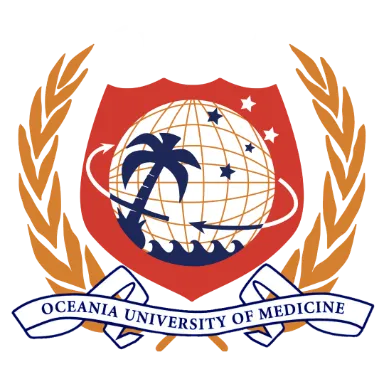Becoming “Rotation Ready” (including Photo Gallery)
The first two years of medical school are strenuous. That is when students learn the basic sciences that form the foundation for the study and practice of medicine. This is the Pre-clinical Phase of Oceania University of Medicine’s (OUM’s) MD program.
Following these two difficult years of studying basic science, students are ready to apply their theoretical knowledge in practice during the final in-person week of the Clinical Transition Units. They then begin caring for patients in clinical rotations, which requires preparation.
Introducing Clinical Transition Units (CTUs)
Following pre-clinical study, before they are allowed to begin clinical rotations, OUM students complete Clinical Transition Units or CTUs, two eight-week training periods, culminating in an in-person week. Twenty students completed this program in July during classes held in both Brisbane, Australia and Apia, Samoa.
OUM’s CTUs are a revamping of the University’s previous Clinical Skills Course with additional hands-on training integrated into the coursework. During the in-person week, students were taught to perfect patient histories and physical examinations, as well as how to gown and glove, suture, administer intradermal injections, perform cannulation (which allows for drawing blood or administering fluids/medications), and more. Friday was spent in mock OSCEs — Objective Simulated Clinical Examinations to test their competency in working with patients and clinicians.
“The OSCE format is a well-established method of assessing clinical competency using scenarios and patient actors,” says Dr. Chris May, OUM’s Director of Clinical Training (Australia) and a key clinical facilitator during Brisbane’s week of training. “As well, it is eventually used to assess students in the final examination of their medical school training.”
Over the years, there has been an inaccurate perception that a medical student’s clinical rotations are for hands-on learning, when honing skills on-the-job. However, OUM faculty clarifies that while that may be true for some training, more realistically, many clinical skills cannot be self-learned simply by observation; they need to be taught, practiced, and assessed.
Building Clinical Competence: What Do Students Learn in CTUs?
CTUs ensure that students are prepared to participate in all aspects of patient care, including time management, communication with families, airway management, intravenous line placement, and electrocardiogram interpretation, among other essential skills and medical procedures.
“CTUs and the in-person week are essentially the training that medical students must have in order to see patients during their clinical rotations in teaching hospitals,” adds Dr. May. “A student’s clinical rotations are the opportunity to gain experience you cannot get from a book or in the classroom,” he says.
Students also cover communication and examination techniques as they relate to Psychiatry, Pediatrics, Emergency Medicine, Surgery, and Internal Medicine, among other disciplines.
Clinical Rotation Requirements for OUM Students
Prior to beginning clinical rotations, in addition to completing CTUs, OUM students in the Standard Pathway must pass their Pre-Clinical Examination (PCE) and have their prospectus for the required research project submitted. Students in OUM’s USMLE Pathway who intend to practice in the United States or Canada must pass the United States Medical Licensing Exam Step 1 instead of the PCE, and also submit their research prospectus.
In addition to now holding CTUs in Australia and Samoa, OUM’s home, the University is arranging its first offering in North America for US and Canadian students at University of Kansas teaching facilities.
Once Rotations Begin, There are Other Considerations
To bolster success during clinical rotations, OUM faculty have some additional recommendations for students that are a little less tangible than inserting an IV line:
Know what you don’t know:
And don’t be afraid to ask questions. Medical students who think they must always have the correct answer and never ask for help aren’t doing themselves any favors. Clinical educators are well aware that third-year students are just beginning rotations and learning to transition from the classroom to the hospital. They are also likely to think more highly of those looking to honestly improve their knowledge and skill set than those who already think they “know it all.”
Develop your bedside manner:
Become the colleague you want to work next to and the doctor you want caring for your mother. Now that you are working with patients, connect with them. Listening to their stories and concerns also helps you retain what you are learning by connecting concepts with actual patient situations. Being the smartest doctor in the room doesn’t mean much if you can’t connect with patients or colleagues.
Seize the opportunity:
Take initiative and be thinking about how you can contribute to the team — don’t always wait for someone to tell you what to do. Also, know that rotations are the only time during your medical education when you have the chance to be exposed to so many different disciplines. Many of these clinical experiences and relationships you encounter during rotations will stay with you throughout your career.
Laying the Groundwork for Future Physicians
As students transition from the classroom to hospitals or clinics, OUM’s CTUs provide the critical foundation needed to succeed in patient care. With a blend of hands-on training, skill-building, and professional development, CTUs ensure that students are not only clinically competent, but also prepared to grow into compassionate and collaborative physicians.














